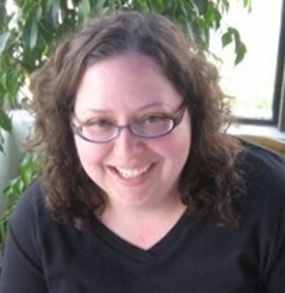Innovative Practices Spotlight
CAE Innovative Practices Spotlight

Dr. Lesley Colabucci, Associate Professor, Early, Middle and Exceptional Education
The Center for Academic Excellence is recognizing a faculty member every month in the CAE Innovative Practices Spotlight to highlight his or her innovative classroom practices and outstanding contribution to Millersville University.
Dr. Lesley Colabucci is being recognized in January for allowing her students the flexibility to use digital tools of their choice to complete assignments in her Education courses!
Please continue reading to learn more about Dr. Colabucci’s exciting experience and to learn ways to incorporate innovative practices into your classroom…
1. What innovative practice did you incorporate into your classroom?
Flexibility is actually the innovative practice I’m most proud of. There are lots of ways to think about flexibility in terms of pedagogy, but in this case I specifically mean allowing my students – actually asking and encouraging them – to use digital tools they know that work for my assignments. As a teacher educator, I am very careful in how I construct my assignments. They are aligned with course objectives and designed to be both meaningful and practical. However, I have learned that they do not need to be as scripted as I once thought. So, if a student can achieve the goals of an assignment using a tool I am not familiar with, why not?
2. When did you implement the new practice into your classroom?
After taking CAMP IDEA. I was originally very resistant to online teaching and when I was in camp I kept asking how this would improve my teaching or better enable students to meet the course objectives. Marie Firestone, an Instructional Support Specialist in IT, helped me find tools that were a great fit for some of my assignments, but over time those tools changed (required a fee or went away entirely), which created a new problem that led to this focus on flexibility.
3. Did the students willingly accept the use of the new practice? What were the reactions of the students?
I found students to be receptive. I think they appreciate when a teacher experiments or tries new things, but there are always questions and a few who are nervous. I have a question and answer discussion board that runs at all times. Students can post there if they are confused or hesitant about something and their peers usually help them solve the problem before I even see the discussion.
4. How has the use of the new practice positively affected the classroom-learning environment?
The flexibility with these assignments has raised my awareness of other ways I might be able to be more flexible as a teacher. Reflecting on pedagogical choices always holds the potential to lead to new “a-ha” moments on innovation. It has also helped me to better integrate D2L into my face-to-face classes. I like the idea of there not being such a dichotomy between online and face-to-face instruction.
5. How has the use of the new practice affected student engagement in the classroom and the level of participation?
This flexible approach to some assignments gives students a bit more freedom and also recognizes the expertise they bring to the classroom. This leads to collaboration among the students. I see them brainstorming and solving problems together. I think it also encourages creativity and enthusiasm. Students often want to show off their digital products.
6. What challenges did you encounter when you were implementing the new practice?
The two main issues have been trust and technology. Some students have a hard time believing me when I tell them they can choose the tool or format for the assignment. They often ask, “So I can still just write a paper?” But after talking with other students and experimenting they try a digital approach. Technology is always a risk. This past winter in my online course, students had trouble embedding in the discussion boards and that led to lots of panic about the assignment being turned in on time.
7. How did attending a CAE Professional Development or Information Technology session contribute to your learning and use of the innovative practice?
Camp IDEA was a turning point for me. There are so many benefits to Camp IDEA, including the exposure to the resources available in D2L and how to make the most of them and the connections forged with other faculty. However, for me the most valuable thing provided by Camp IDEA was time. Being a reflective practitioner requires a great deal of time and energy and both of them can be hard to come by. Camp IDEA enabled me to prioritize and dedicate myself to refining my teaching. I was able to evaluate the strengths and weaknesses of my courses, explore the various tools that might work for meeting my objectives, and consult with more expert others.
- Faculty in The Spotlight
-
Contact Us
Coordinator: Dr. A Nicole Pfannenstiel
Phone: 717-871-4282